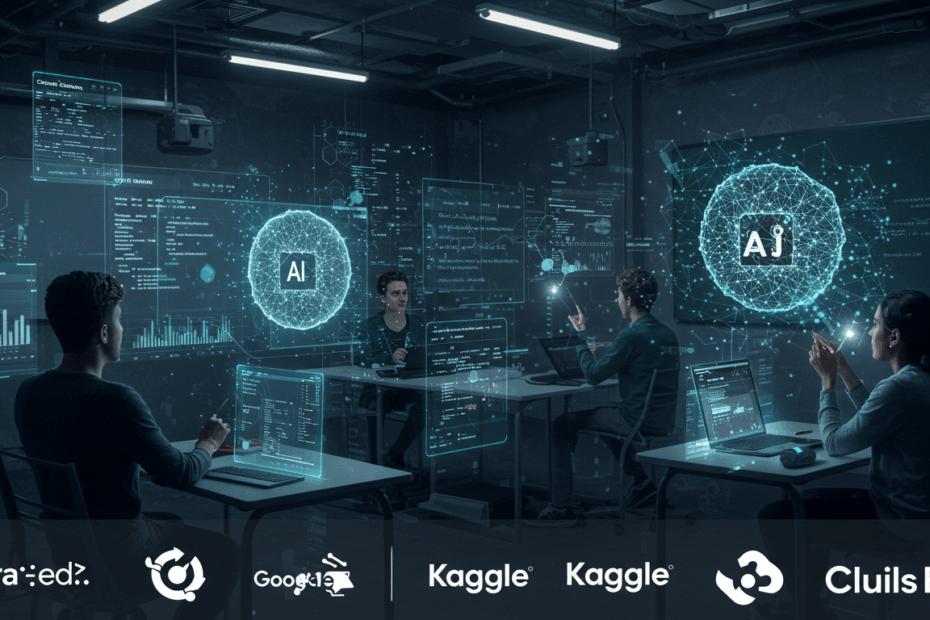The Top AI Learning Platforms of 2025: A Field Guide For Serious Builders
John: Hi everyone, I’m John, a professional tech blogger focusing on Web3, metaverse, and blockchain topics. Today, we’re diving into the top AI learning platforms of 2025, based on recent reports, to help serious builders get started with practical, hands-on resources.
Lila: That sounds exciting, John! Readers are always asking about reliable ways to learn AI without getting overwhelmed. So, what exactly makes a platform great for builders in 2025?
Understanding AI Learning Platforms
John: AI learning platforms are online services that offer courses, tools, and communities for studying artificial intelligence. In the past, platforms like Coursera started in 2012, providing basic online courses. Currently, as of 2025-09-02, they’ve evolved to include interactive coding and real-world projects.
Lila: Got it, but what’s a “serious builder” in this context?
John: A serious builder is someone creating AI applications, like developers or entrepreneurs building models for apps. These platforms help by offering structured learning paths with certifications.
Top Platforms Highlighted in 2025
Lila: Which ones stand out this year?
John: Based on a recent Metaverse Post article from 2025-09-01, the top five are Coursera, edX, Hugging Face, Kaggle, and Google Cloud Skills Boost. Coursera, founded in 2012, now partners with universities for AI specializations, reaching millions of users.
Lila: Tell me more about Hugging Face—what’s that?
John: Hugging Face is a platform for sharing AI models and datasets, launched in 2016. Currently, it hosts over 500,000 models as of 2025, making it ideal for builders experimenting with machine learning (that’s a branch of AI where systems learn from data).
Lila: And Kaggle?
John: Kaggle, acquired by Google in 2017, focuses on data science competitions. In 2025, it offers free datasets and notebooks, with over 10 million users participating in challenges to build skills.
How These Platforms Have Evolved
John: In the past, these platforms were mostly lecture-based, but now they integrate AI tools for personalized learning. For example, edX, started in 2012 by MIT and Harvard, added micro-credentials in 2023, and currently emphasizes hands-on AI projects.
Lila: What changed recently?
John: As of 2025, Google Cloud Skills Boost introduced free AI courses tied to cloud computing, reflecting a shift toward practical, job-ready skills. This builds on updates from 2024, where platforms like Coursera incorporated generative AI modules.
Practical Use Cases for Builders
Lila: How can builders actually use these?
John: Builders use them for prototyping. For instance, on Hugging Face, you can fine-tune models for chatbots, while Kaggle helps with predictive analytics in blockchain projects.
Lila: Any real examples?
John: Yes, a developer might use Google Cloud Skills Boost to learn AI deployment, then apply it to Web3 apps. Currently, these platforms support use cases like natural language processing in metaverse interactions.
Tips for Getting Started
John: To start, pick one platform based on your level. Here’s a quick list of tips:
- Begin with Coursera if you want structured courses from experts.
- Use Kaggle for free competitions to practice coding.
- Explore Hugging Face for open-source models and community forums.
- Try edX for university-level AI certifications.
- Go to Google Cloud Skills Boost for cloud-integrated learning.
Lila: That’s helpful! What about costs?
John: Many are free to start, but certifications cost $49–$200. Always check official sites for current pricing, and remember, compliance with data privacy laws varies by jurisdiction—consult local regulations.
Challenges and Safeguards
Lila: Are there any downsides?
John: One challenge is the fast pace of AI; content can outdated quickly, but platforms update regularly. In the past, data privacy was a big issue, but now, as of 2025, they follow standards like GDPR.
Lila: How to stay safe?
John: Use verified accounts and avoid sharing sensitive data. (And hey, if you’re building AI for fun, remember it’s like learning to cook—start simple to avoid a mess!)
Looking Ahead
John: Looking ahead, expect more integration with VR for immersive learning, based on trends from 2025 reports. Platforms like these will likely add more Web3-focused AI courses by 2026.
Lila: What should readers watch for?
John: Keep an eye on updates from official sources. New features, like advanced simulations on Hugging Face, could emerge soon.
John: Wrapping up, these platforms make AI accessible for builders, blending theory with practice. Whether you’re into Web3 or metaverse, starting here can boost your skills effectively. Thanks for joining us—stay curious!
Lila: Great overview, John! The key takeaway is to choose a platform that fits your goals and dive in with hands-on projects.
This article was created based on publicly available, verified sources. References:
- The Top AI Learning Platforms of 2025: A Field Guide For Serious Builders
- The Top 10 AI-Powered Learning Platforms in 2025
- The 40 Best AI Tools in 2025 (Tried & Tested)
- The 26 Best Artificial Intelligence Platforms of 2025
- Best AI Learning Platforms in 2025: Top 10 Insights for Startups and Entrepreneurs
